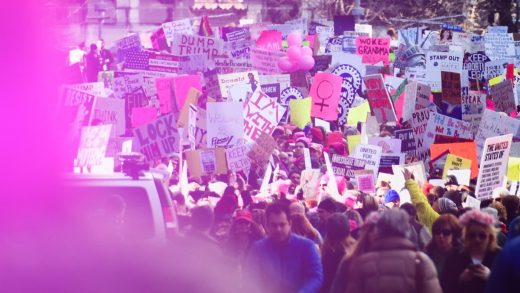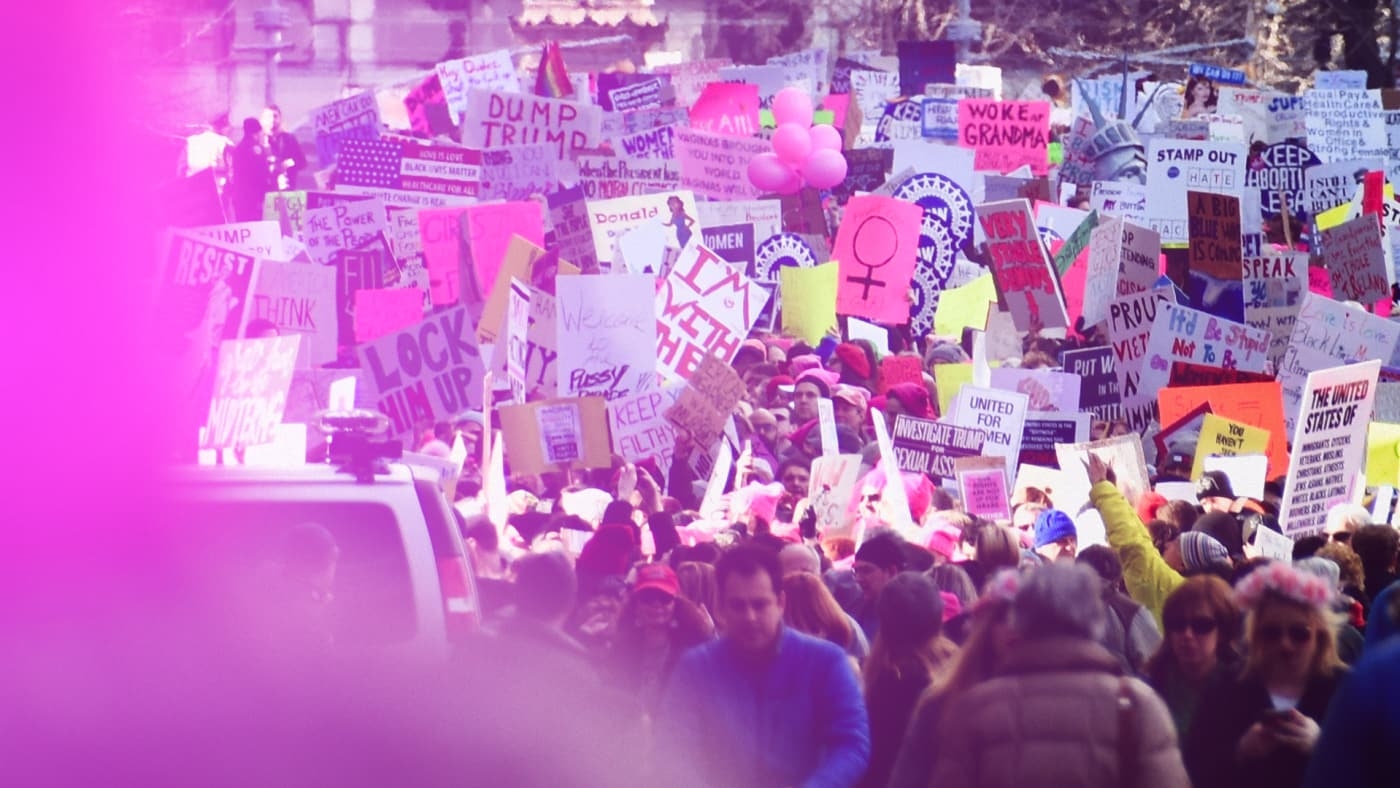What HR Is Doing To Make Sure There Aren’t More #MeToo Moments
“As someone who has grown up in industries full of men, from being an engineer, to a CEO, to a tech executive, my #MeToo experience centers around having had to overcome the unconscious biases that exist to get to where I am,” says Maia Josebachvili, vice president of marketing and strategy at Greenhouse Software.
Josebachvili recognizes that the world of work is at an inflection point in the wake of #MeToo, #TimesUp, and more broadly how diversity and inclusion is shifting in response to the current presidential administration’s stance on a number of issues including immigration and gun control.
Since 2017 was a year of reckoning for sexism, and more specifically, sexual harassment, there has been a significant increase in the number of women (and men) reporting incidents, according to data from anonymous employee polls on Comparably.
Women are reporting sexual harassment more
As such, there’s been an increased focus on HR’s role across the board from hiring, to reporting of incidents, to training and other inclusion initiatives. NAVEX Global, a legal compliance software company, has also seen an increase in reporting in the last quarter of 2017, and also found that 44% of all reports received were substantiated, a 10% increase over last year.
“The increase in substantiated reports is an indication of maturing programs. Higher-quality, more actionable reports are coming into hotlines and other reporting channels, which in turn allows for more thorough investigations,” NAVEX Global’s chief compliance officer Carrie Penman, said in a statement. “Nearly one of every two reports made is now substantiated. This finding highlights the need to have sufficient resources available to review incoming reports in a timely way.”
Why D&I is more important than ever
Company HR departments are tackling this in a variety of ways but many agree that diversity and inclusion initiatives are inextricably tied to the success of eradicating sexism, discrimination, and harassment in the workplace. For her part, Josebachvili contends that there’s “no silver bullet” for an HR department to continue to deploy but rather an arsenal of tools to instigate change.
HR’s handling of hiring, says Josebachvili, is where it all starts. Greenhouse Software has instituted the Rooney Rule, she says. The approach–taken from the NFL’s attempt to diversify its head coaches–requires that companies must consider a certain number of underrepresented minority candidates for open positions. Although a recent study found that there’s statistically no chance that a single female or underrepresented minority candidate would have a shot at getting hired, Josebachvili says the company’s definition of what the rule should require has made it successful. “We’ve defined it by the on-site interview,” she points out, rather than have minority candidates get screened out through the phone interview. It’s working, she observes. “A year ago our executive team was 25% female and now it’s 40%.”
It’s also worked successfully for Pinterest, as well as served to debunk the pipeline myth. “We actually had hundreds of candidates that we looked at who were women for the head of engineering role, even though women are under 5% of that talent pool,” Pinterest’s head of diversity and inclusion Candice Morgan told Fast Company in July.
Another measure that Josebachvili has seen HR departments start to implement more frequently is setting the criteria for candidates up front to mitigate unconscious biases. She says she’s seen the language about finding “culture fit” change to “culture add” to be more inclusive. And preconceived notions about what the ideal candidate should look like have been taken down by creating more inclusive job descriptions as well as sticking with a strict template for questions in behavioral interviews.
The questions she posits should reflect “what are the values that really matter [to your organization] and what behaviors you are trying to propagate.” For example, of collaboration is a core value, the interviewer could ask the candidate to tell them about a time that they went out of their way to help a colleague succeed on a project they weren’t directly involved in and not tied to meeting their own goal. This is the opposite of having the interviewer offer the candidate a hypothetical situation where candidates would offer a canned response. Asking each candidate the exact same questions, says Josebachvili, is a less discriminatory practice.
Yes, automation and data will play a part
Another way HR departments are approaching this is through automation and analytics. Josebachvili notes that Greenhouse Software is doing a beta test of Greenhouse Inclusion aimed at making hiring more equitable with “In-the-Moment Interventions” such as highlighting the most relevant information, anonymizing tests, and using well-timed nudges, during the hiring process, as well as analyzing candidate data to identify problem areas. There are currently more than 300 companies on the waitlist for Inclusion when it fully launches. But other solutions have developed over the last year. WayUp’s dashboard analytics highlight the demographics and diversity of the applicant pool every step of the interview process.
Another somewhat controversial one sees as necessary in the wake of #MeToo is sharing data on the makeup of the staff. When companies don’t measure progress, it can lead to growing the ranks with the same type of people, she argues. Reporting gender splits and the number underrepresented minorities, LGBT, veterans, or people with disabilities holds the company accountable to stakeholders, consumers, and the public at large. However, Josebachvili notes that lawyers have historically discouraged well-intended tracking and reporting because it could be used against the organization if employees wanted to file a suit for discrimination.
Those companies that are reporting are realizing a somewhat more diverse staff. For instance, since Hubspot started sharing its internal data last year, its become more gender-balanced. Now 46% of its vice presidents company-wide are women, a 20% increase from the previous year. Across the company, 45% of managers and executives are women. Hubspot says this is due to both internal growth and external recruiting efforts. However, the company is still overwhelmingly white.
Hiring more diverse candidates is again, just one measure HR has beefed up particularly in the last year. Retention efforts have also gotten a boost from anonymous reporting tools like Intel’s Warmline which has fielded 10,000 cases and Spot’s chatbot, sends private PDF reports to send to HR.
Joonko’s AI solution analyzes employees’ performance based on total experience, success rate, and tenure at the company and alerts managers to offer opportunities to someone who may be getting overlooked due to unconscious bias. Algorithm-based solutions like Limeade’s Inclusion+ and ZeroIn’s Happy and Inclusion (HI Index) also serve to take the temperature of employees to ensure that everyone is engaged.
Changing the conversation from the start
As for startups, those that have grown quickly often add to their ranks without the guidance of an HR department, notes Beth Ferreira, a managing director at the New York-based VC firm FirstMark Capital. However, since MeToo, she says investors have seen an increased number of founders talk about diversity on their teams, “even at the earliest stages of their companies where it is arguably one of the hardest times to do that.” Additionally, Ferreira says, “I’ve even had a few founders apologize to me for the lack of diversity on their team pages during their pitch.” These entrepreneurs are also turning the question around to investors. “More founders are asking about gender and other diversity [at the firm] before meeting with potential investors,” she says.
Josebachvili believes it’s all part of an increased awareness driven by the events of the past two years and trickling up to executives and board–where it can then be better positioned to be embedded in a company’s values. “Culture doesn’t live in HR,” she underscores.
Katie Burke, the chief people officer at Hubspot notes that a recent survey from theBoardlist suggests that 88% of boards haven’t worked with companies to create action plans around #metoo. “That’s unacceptable,” she contends. HubSpot’s board asked for a plan on what they do to support employees against harassment, but also a plan to re-communicate that commitment to the entire company in the wake of #metoo. This, says Burke, includes all of Hubspot’s reporting channels and it’s broader policy. “The right question to ask isn’t how companies are reacting to #metoo, but rather how your team is working daily to recruit, retain, grow, support, and empower women in the work environment.” She says she wishes more boards would take a proactive role in this conversation.
If they do, it may help change one disturbing statistic from the NAVEX Global report. Although there was a declining rate of the already low number of reports of retaliation coming out of internal harassment reporting systems (0.93% to 0.66% in 2017) organizations historically receive few internal reports of retaliation but the substantiation rate of those reports is at its highest level, 32% up from 26%.
“Retaliation has received a lot of media attention lately–and many executives and compliance officers may be lulled into a false sense of security by the very low number of reports of retaliation coming into their organizations,” Penman the chief compliance officer said. “But low reporting of retaliation concerns doesn’t mean that it isn’t happening, and organizations, including their boards of directors, need to proactively address and monitor this issue to ensure more progress is made.”
(13)



